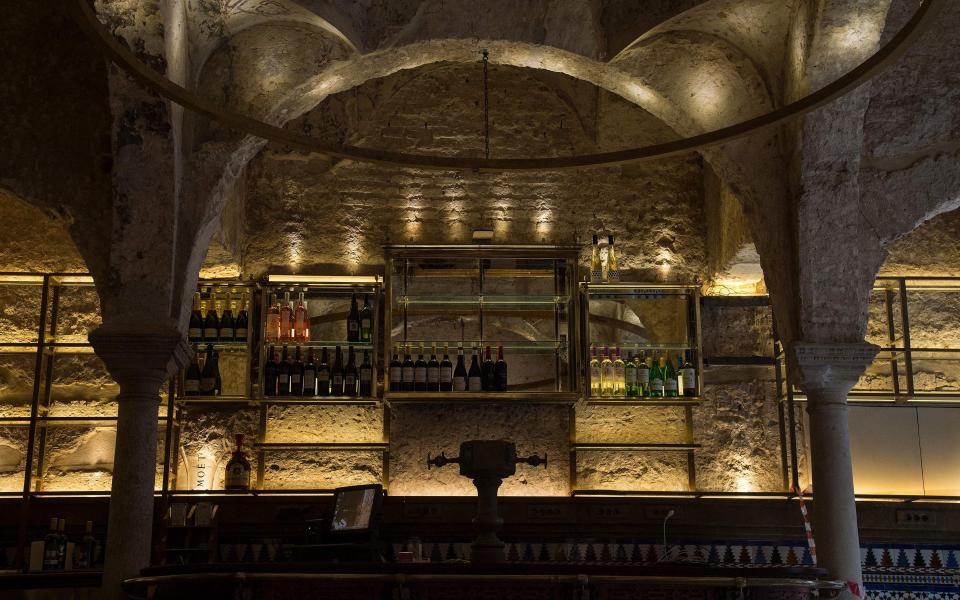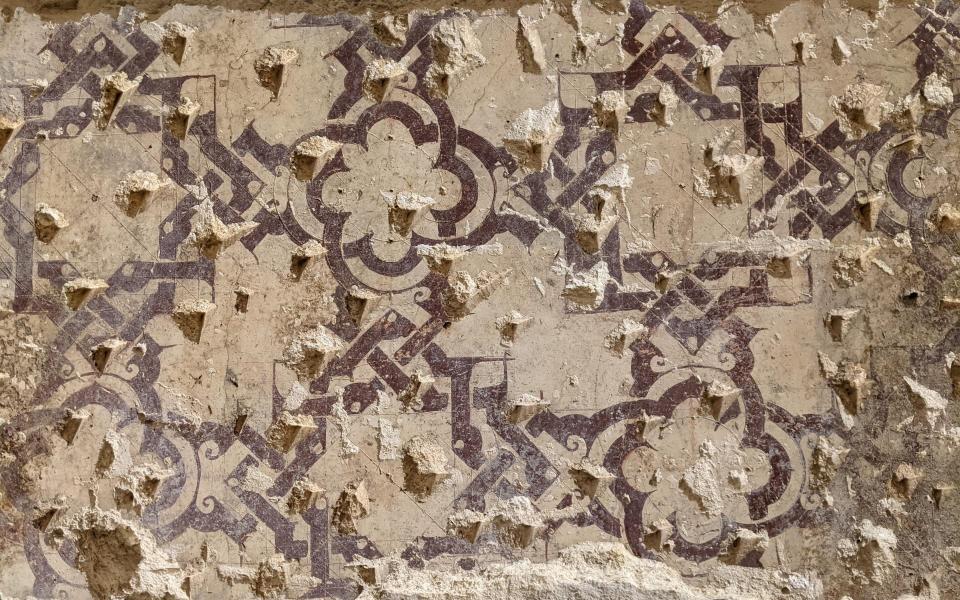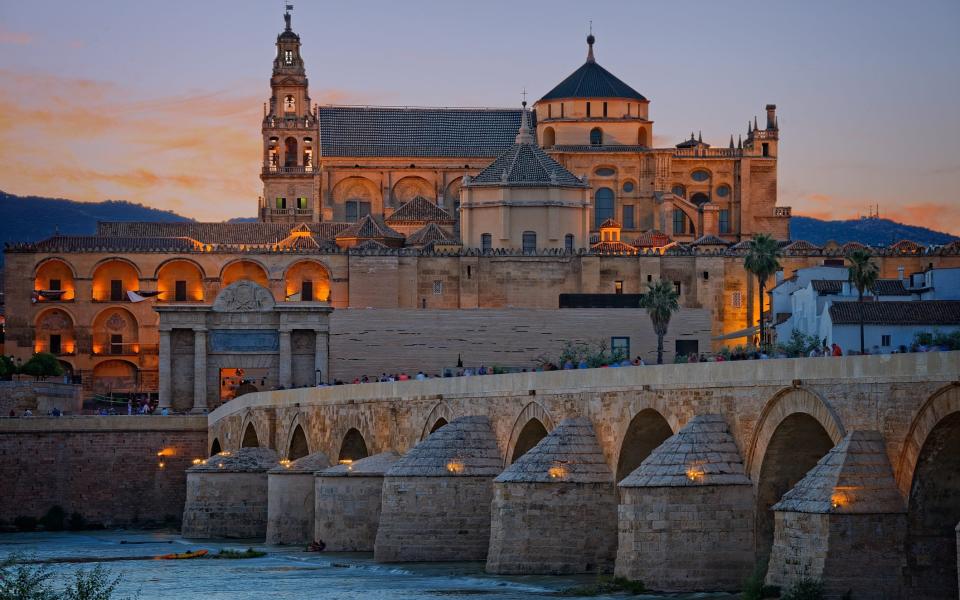How one tapas bar's spring clean unearthed a hidden medieval wonder

One of the very few silver linings to emerge from the cloud of Covid-19 has been our urge to spring-clean. Or indeed, summer-clean, autumn-clean and winter-clean to boot. With repeated lockdowns and unexpected time at home on our hands, we have sorted out and decluttered. Household tasks left neglected have been given new attention. Walls in need of re-painting have been given fresh coats. Gardens have been weeded, lofts cleared.
But over in Andalusia – and in the notable case of one Seville tapas bar – this reenergising process has gone much further than filling a few boxes for charity donation and kerbside recycling. It has led to a fabulous rediscovery – and a journey back into the 12th century.
Like much of western Europe, Spain’s fourth biggest city spent most of last year tied up in various levels of closure – strict enough that, come July, the Cerveceria Giralda decided to undertake a spot of renovation. Of course, the heat of the Andalusian sun tends to stem the flow of people into central Seville in high summer in the best of years – but with the added effect of the pandemic, here was a chance to undertake some extra house-keeping.
What should have been a gentle sprucing up turned into a sizeable excavation.
The tapas bar has been at its address on Calle Mateos Gago for just short of a century – it opened its doors in 1923. But its foundations are burrowed into a much earlier period – the time of Al-Andalus, when the majority of what is now Spain and Portugal was under Moorish rule. This era stretched from 711, when Umayyad warriors began crossing the Strait of Gibraltar from north Africa, to 1492, when Granada was the final Emirate to fall to the Spanish crown. Seville checked out a little earlier – it was taken by Ferdinand III of Castile on November 23 1248 – but much of its centre was laid out in those five centuries.

Including, it turns out, the Cerveceria Giralda. Or, at least, the building it inhabits. Peeling away the modern plaster encasing this lively eatery revealed the remains of an Islamic bath-house – probably from the 12th century. There had been rumours that such a structure might exist unseen in the bar’s walls. But they were often countered by the reasonable suggestion that the building probably dated to the “Neo-Mudejar” boom – the Moorish Revival architectural trend that swept the Iberian Peninsula in the late 19th and early 20th centuries, and which was still in vogue in Seville when the cerveceria arrived.
However, almost as soon as the work began, the truth started to make itself obvious. Breaking through the bar’s false ceiling uncovered a skylight which seemed to be of a decidedly older vintage than the Roaring Twenties. Suspecting that they had stumbled onto an authentic treasure of early medieval history, the bar’s owners sent for the experts.
“As soon as we saw one of the skylights, we knew what it was,” Alvaro Jimenez – one of the archaeologists who picked up the call – told Spanish paper El Pais. “It just couldn’t have been anything but a bath-house. We just had to follow the pattern of the skylights.”

As more and more plaster was stripped away, it became clear that the structure was quite the find. Not only is it significantly intact; much of its decor is in excellent condition. “The most important thing we have found is that the baths were completely painted, from top to bottom, and with a high quality geometric decoration,” Jimenez continued. “The drawings are done in almagra [a red clay colour typical of Andalusia] on fragments of white background, that have been preserved on vaulted ceilings and walls. These are the only completely decorated Islamic baths that we know of [on the Iberian peninsula]. Until now, we have only known of examples with paintings on the base-boards [of the walls].”
“Absolutely everything here is decorated – and luckily, it has survived. The background is white lime mortar, engraved with geometric lines, circles and squares. On top of that, you have red ochre paintings of eight-pointed stars, and eight-petalled multi-foil rosettes. The two designs alternate and adapt to the different geometric shapes of the skylight holes.”

In all, 88 of the skylights (luceras), of various shapes, sizes and designs, have been brought back into the light. Further research has indicated that the bar’s main space used to be the hamman’s warm room – while its dining area would have been the cold room.
In some ways, it should have been no great shock to discover such a relic in such a place. The “Giralda” mentioned in the bar’s name is, of course, the bell-tower of Seville’s majestic cathedral – a Unesco-listed wonder that was originally the minaret of the city’s 12th century Great Mosque. The cerveceria stands just metres from the church – and only a short stroll from the Alcazar, the royal palace that, with certain caveats (see below) is one of the key emblems of Andalusia’s Islamic heritage. Its location was the very heart of the Moorish settlement. The bath-house would have been popular, and enormously busy.
Nonetheless, the archaeologists who inspected the bar claim the finding was unexpected.
“It was an absolute surprise,” Fernando Amores, another member of the team, explained. “This important discovery gives us an idea of how other baths could have been during the Almohad [the caliphate which controlled much of Iberia in the 12th century] period. Especially in Seville, which was one of the two capitals of the empire – with Marrakech.”

As exciting as all this is, the owners insist the Cerveceria (cerveceriagiralda.com) will continue to be open for its day job. “This was a pretty well-known bar already,” Antonio Castro, one of its four co-owners, told The Guardian. “But now people will be able to come in and have a beer or a glass of wine in a bar that is also a 12th century hamman.” A compromise has been achieved, with the 1923 tiling and the original wooden bar-counter being kept in situ, while the original Islamic architecture has been given room to breathe.
Castro insists that considerable credit should go to Vicente Traver y Tomas – the celebrated Valencian architect who transformed the bath-house into a hotel and a hostelry in the first place. “It’s a good thing that the architect back in the 1920s respected the baths,” he added. “Others might have chucked everything out. So we are grateful to him.”
Five Moorish marvels of Andalusia
The Giralda (Seville)
To say that this 342ft (104m) miracle is more beautiful than the cathedral for whom it calls the faithful to worship is not to denigrate Seville’s grand Catholic bastion – merely to say that its companion is the supermodel of bell-towers. It was originally the minaret of the Almohad mosque commissioned in 1171 by the caliph Abu Ya’qub Yusuf. Neither the main building (finished in 1176) nor the Giralda (1198) had long been completed when Castilian troops captured the city, and its upper level is a Renaissance crown, added in 1568 – but the intricate lattice pattern on the tower’s flanks do not conceal their origins.
The Alcazar of Seville
Just across from the cathedral, the Alcazar looks every inch the Almohad edifice its name suggests. In reality, what is still a seat of the Spanish crown when royalty is in town is a 14th and 15th century remodelling of the Moorish palace that had stood on the site since the 10th century. Successive expansions and renovations took the complex further and further from its foundations – but it retains it Al-Andalusian soul in its arches and alcoves, courtyards and fountains. The Patio del Yeso, with its tell-tale carved masonry, is original.

The Alcazar of Cordoba
Though only 90 miles from Seville, Cordoba was the early capital of Moorish Iberia – and held sway over Seville until a civil war in the early 11th century saw its territory fracture into a series of smaller kingdoms. But its time as a powerhouse is still visible in the grand buildings that were left behind. As with its counterpart up the E-5 motorway, the Alcazar of Cordoba was massively modified by the Spanish kings who “inherited” it, but it retains some of the building blocks of the fortress that was piled high from the eighth century onwards. The adjacent Caliphal Baths – 10th century in origin – were part of the complex.

Cordoba Cathedral
You do not need to be a scholar in religious architecture to spot that Cordoba’s Catedral de Nuestra Señora de la Asunción has Muslim ancestry. In truth, it may also have Roman (a temple to Janus) and Visigothic DNA, but its former Islamic purpose is immediately obvious in its rectangular outline, interior courtyard and belltower-cum-minaret. Construction of the mosque began in 785. It could have been yesterday, so apparent is the Al-Andalusian era in the columns, mosaics and gracious curves that still greet the visitor.

The Alhambra (Granada)
The Emirate of Granada was the last Moorish kingdom to fall to the Spanish (in 1492). Seville will argue loudly – but there is scant doubt that this little city of the Sierra Nevada is home to the absolute jewel of the era. The Alhambra was founded as a fortress in 889, but considerably expanded by Sultan Yusuf I in the mid-14th century. He created a palace fit for a king of any creed or era. His Spanish successor Charles I would wrestle with the shape of this hilltop fantasy, but for all his effort – and for all the neglect the Alhambra was forced to endure during the 18th and 19th centuries (at one point, it was used as a barracks for Napoleon’s troops) – it remains Yusuf’s child. Endlessly photogenic, the Palacio Nazaries at its heart is the encapsulation of the craft and creativity of Al-Andalus.
Read more: The best hotels in Andalusia

